Why you can trust Tom's Hardware
Comparison Products
There are some new drives out on the market that weren’t here when we reviewed the 1TB CS3140, including PCIe 5.0 SSDs like the Crucial T700 and Corsair MP700. We also have reviewed some great 4.0 SSDs like the Samsung 990 Pro, the Solidigm P44 Pro/SK hynix Platinum P41, and the WD Black SN850X. There’s also the Sabrent Rocket 4 Plus-G and Adata Legend 960 Max. Lastly, we have the budget-oriented Solidigm P41 Plus. Keep in mind that we got the PS5 heatsink with the 2TB CS3140 which makes it great for the PS5 even if the drive is dated in standard benchmarks.
A Closer Look



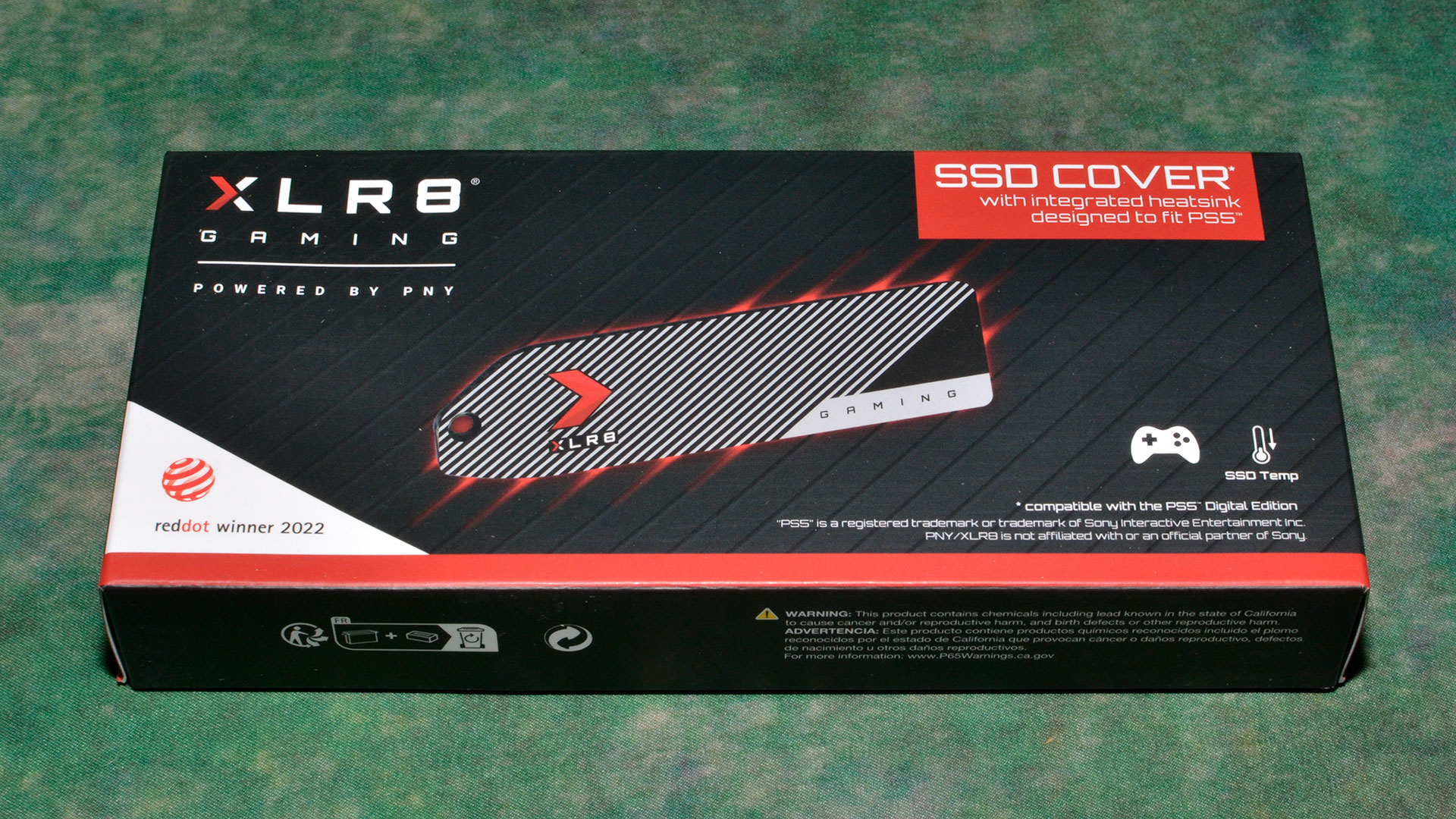



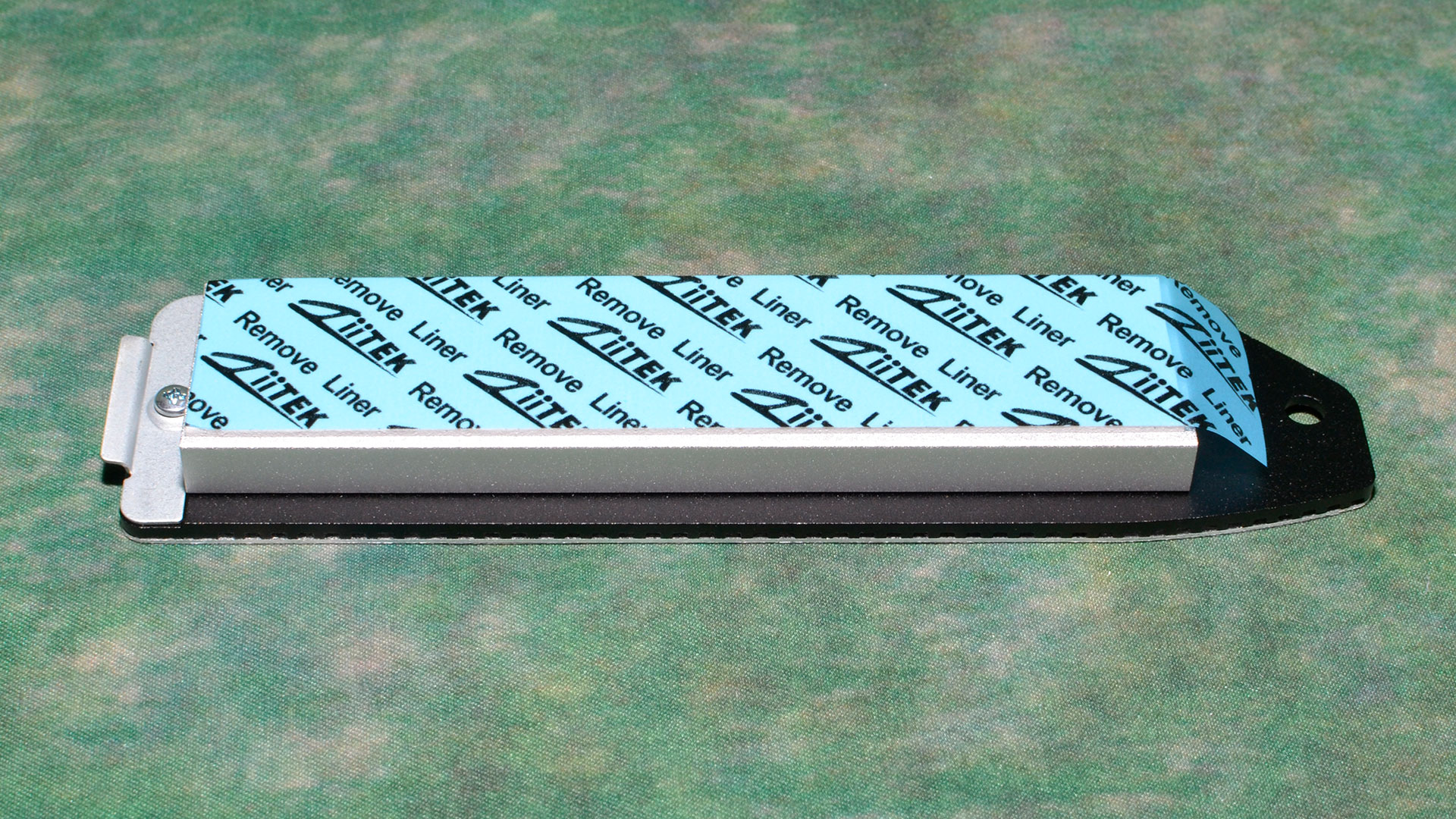




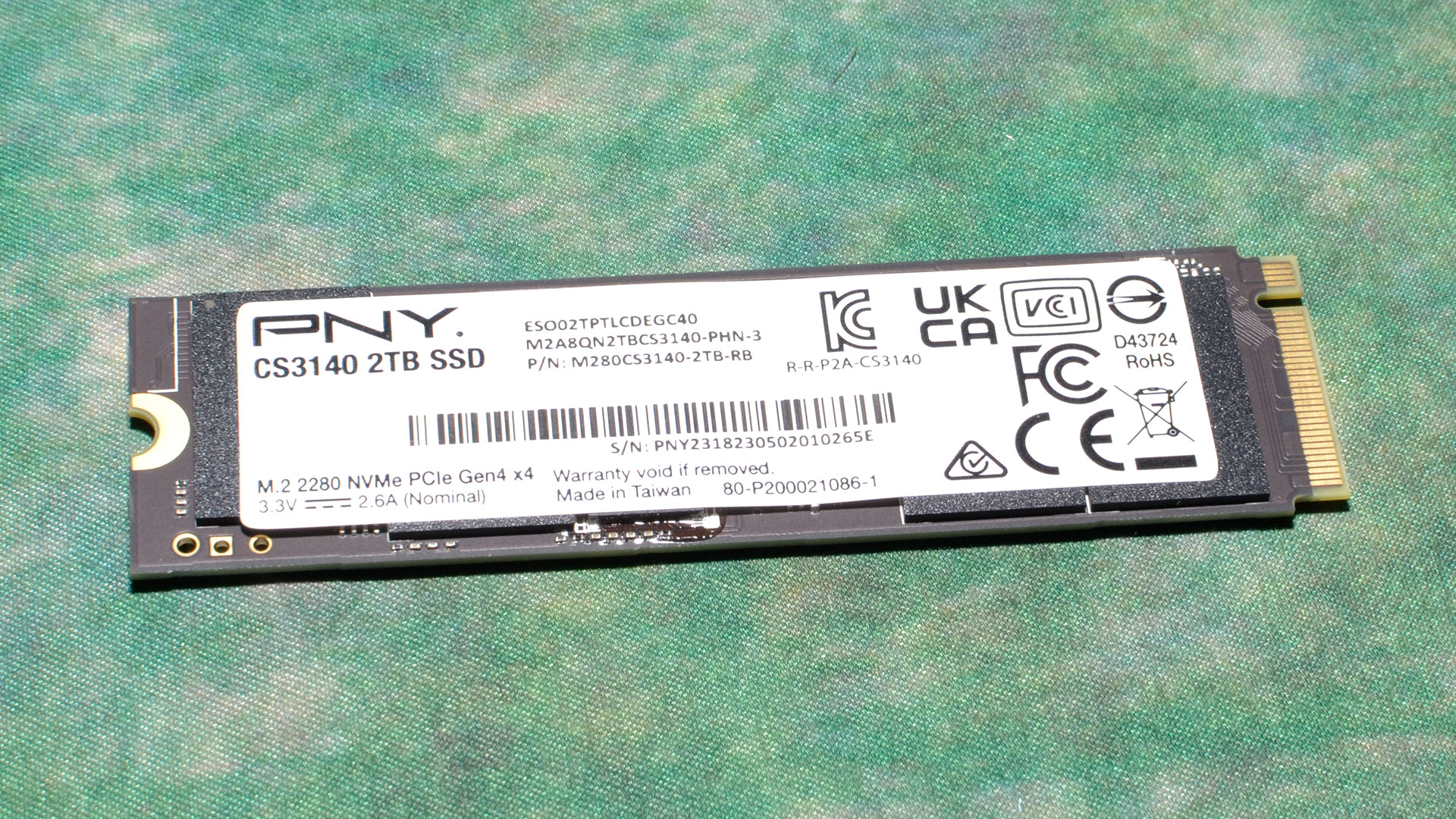

Trace Testing - 3DMark Storage Benchmark
Built for gamers, 3DMark’s Storage Benchmark focuses on real-world gaming performance. Each round in this benchmark stresses storage based on gaming activities including loading games, saving progress, installing game files, and recording gameplay video streams.



The CS3140 is below average in 3DMark. It scored slightly worse than the 1TB version.
Trace Testing – PCMark 10 Storage Benchmark
PCMark 10 is a trace-based benchmark that uses a wide-ranging set of real-world traces from popular applications and everyday tasks to measure the performance of storage devices.

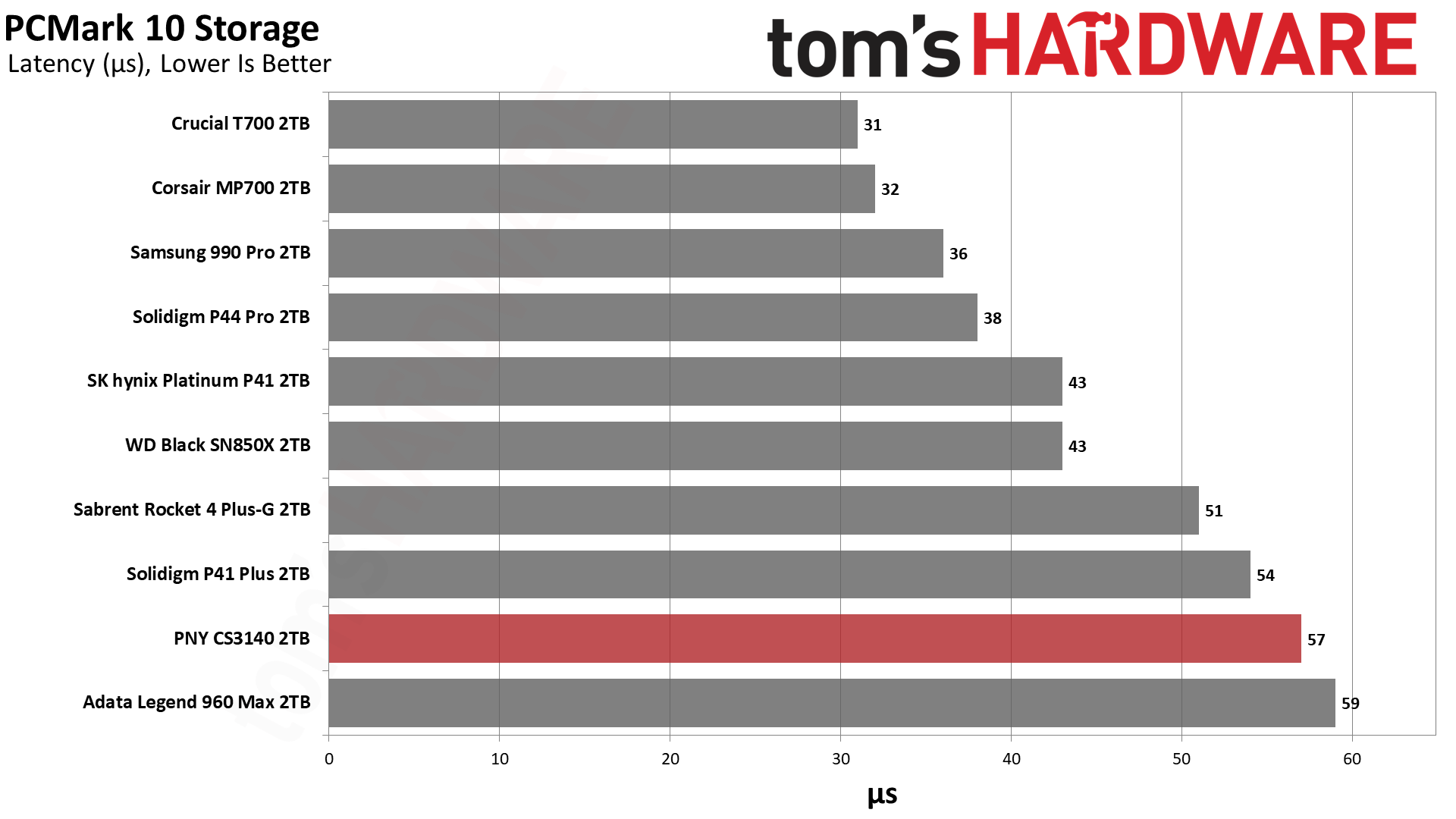

The CS3140 is near the bottom in PCMark 10, too, faring worse than the 1TB version.
Transfer Rates – DiskBench
We use the DiskBench storage benchmarking tool to test file transfer performance with a custom, 50GB dataset. We copy 31,227 files of various types, such as pictures, PDFs, and videos to a new folder and then follow-up with a reading test of a newly-written 6.5GB zip file.



Things aren’t quite as bad with DiskBench. The CS3140 is close enough to the other high-end PCIe 4.0 SSDs. The 5.0 SSDs - the T700 and MP700 - pull away due to their faster interface, while the slower P41 Plus is at the bottom.
Get Tom's Hardware's best news and in-depth reviews, straight to your inbox.
Synthetic Testing - ATTO / CrystalDiskMark
ATTO and CrystalDiskMark (CDM) are free and easy-to-use storage benchmarking tools that SSD vendors commonly use to assign performance specifications to their products. Both of these tools give us insight into how each device handles different file sizes.

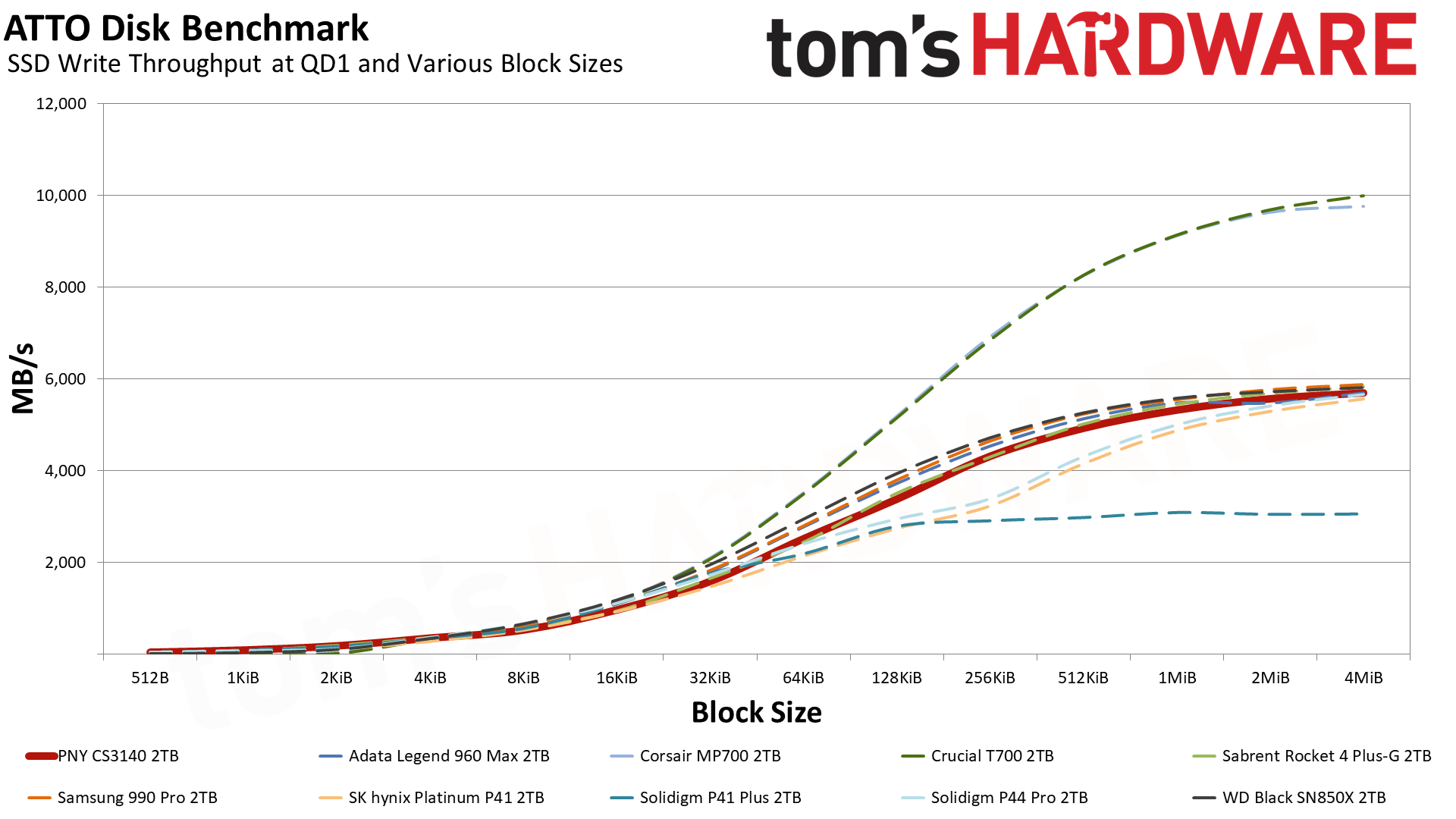










The CS3140’s sequential performance in ATTO and CDM is adequate but not on the level of the better PCIe 4.0 SSDs. This is fine as sequential performance at this level isn’t super important. Random write latency is good — surprisingly good even, but random read latency is fairly bad and significantly worse than the 1TB version of this drive.
The reason for that is obvious; PNY switched to 112-Layer Kioxia TLC (BiCS5) which does not perform as well with this controller as the original 176-Layer Micron TLC (B47R). However, if you’re buying a drive for capacity and especially for the PS5, this is not a big deal.
Sustained Write Performance and Cache Recovery
Official write specifications are only part of the performance picture. Most SSDs implement a write cache, which is a fast area of (usually) pseudo-SLC programmed flash that absorbs incoming data. Sustained write speeds can suffer tremendously once the workload spills outside of the cache and into the "native" TLC or QLC flash.
We use Iometer to hammer the SSD with sequential writes for 15 minutes to measure both the size of the write cache and performance after the cache is saturated. We also monitor cache recovery via multiple idle rounds.



The 2TB CS3140 writes in pSLC mode for over 30 seconds at up to 6.2 GB/s. This makes for a cache over 200GB, which is fairly large. Luckily, the drive does not easily hit a folding state, and instead drops to around 1.6 GB/s in TLC mode. This is not a bad result in any way. The 1TB version with Micron TLC is faster in TLC mode and it would probably be even faster with more dies at 2TB. Still, the BiCS5 2TB CS3140 is fairly consistent. Its recovery response has it lingering in TLC mode, which is luckily not too bad.
Power Consumption and Temperature
We use the Quarch HD Programmable Power Module to gain a deeper understanding of power characteristics. Idle power consumption is an important aspect to consider, especially if you're looking for a laptop upgrade as even the best ultrabooks can have mediocre storage.
Some SSDs can consume watts of power at idle while better-suited ones sip just milliwatts. Average workload power consumption and max consumption are two other aspects of power consumption, but performance-per-watt is more important. A drive might consume more power during any given workload, but accomplishing a task faster allows the drive to drop into an idle state more quickly, ultimately saving energy.
For temperature recording we currently poll the drive’s primary composite sensor during testing with a 24C ambient.




The 2TB CS3140 with BiCS5 flash is not very efficient, especially compared to similar drives using Micron’s TLC instead. This is to be expected as this flash is less efficient in general and does not seem to pair quite as well with Phison’s E18 controller. This result isn’t crtical if this drive is used in a high-end desktop or PS5, but it does demonstrate the downsides of swapping the flash. It’s worth pointing out that other manufacturers can and have changed hardware over the course of an SSD’s lifespan.
We only reached a brief maximum of 67C during testing, which is far away from significant throttling. This drive would be quite happy in a PS5 with the optional heatsink. We would recommend it for that or perhaps some extra fast storage if the drive is priced right. Right now, at the time of the review update, the 2TB SN850X is probably the better option.
Test Bench and Testing Notes
| CPU | Intel Core i9-11900K |
| Motherboard | ASRock Z590 Taichi |
| Memory | 2x8GB Kingston HyperX Predator DDR4 5333 |
| Graphics | Intel UHD Graphics 750 |
| CPU Cooling | Alphacool Eissturm Hurricane Copper 45 3x140mm |
| Case | Streacom BC1 Open Benchtable |
| Power Supply | Corsair SF750 Platinum |
| OS Storage | WD_Black SN850 2TB |
| Operating System | Windows 10 Pro 64-bit 20H2 |
We use an Alder Lake platform with most background applications such as indexing, Windows updates, and anti-virus disabled in the OS to reduce run-to-run variability. Each SSD is prefilled to 50% capacity and tested as a secondary device. Unless noted, we use active cooling for all SSDs.
MORE: Best SSDs
MORE: Best SSD for the Steam Deck
MORE: Best Hard Drives
MORE: Best External SSDs
Current page: 2TB Performance Results
Prev Page Features and Specifications Next Page 1TB Performance Results
Shane Downing is a Freelance Reviewer for Tom’s Hardware US, covering consumer storage hardware.